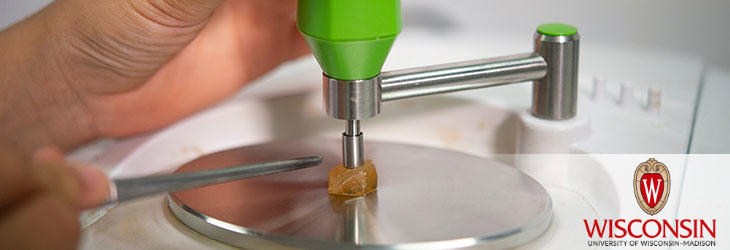Research Tools

Label-Free, Radio-Frequency Detection of DNA Hybridization at Microelectrodes
WARF: P03002US
Inventors: Daniel van der Weide, Robert Hamers, Wei Cai, John Peck
The Wisconsin Alumni Research Foundation (WARF) is seeking commercial partners interested in developing a new device and method for directly detecting DNA hybridization at microelectrodes.
Overview
Most of today’s technologies for detecting DNA hybridization – the binding of a DNA strand to its complementary strand – require the use of fluorescent tags or other types of labels.
The Invention
UW-Madison researchers have developed a new device and method that use radio-frequency (RF) excitation to directly detect DNA hybridization at microelectrodes. This invention exploits the electrochemical double-layer that forms at solid-liquid interfaces, and, in particular, this layer’s non-linear dielectric properties, which change in response to DNA hybridization events.
The method employs a novel homodyne reflectometer that includes a counter electrode and a working electrode, with the surface of the working electrode functionalized to carry single-stranded DNA molecules. When a low-frequency RF modulation signal is applied to the counter electrode and a high-frequency carrier signal is applied to the working electrode, these signals are mixed by the non-linear behavior of the double-layer at the interface between the working electrode and the solution of attached DNA. Mixing, in turn, generates a new signal that exhibits significant changes in amplitude when DNA hybridizes at the surface.
The dielectric properties of solid-liquid interfaces are known to change in response to biological binding events. What sets this invention apart is that it measures the non-linear response of the double-layer, allowing isolation of the active sensing region from background changes in dielectric properties unrelated to DNA hybridization.
The method employs a novel homodyne reflectometer that includes a counter electrode and a working electrode, with the surface of the working electrode functionalized to carry single-stranded DNA molecules. When a low-frequency RF modulation signal is applied to the counter electrode and a high-frequency carrier signal is applied to the working electrode, these signals are mixed by the non-linear behavior of the double-layer at the interface between the working electrode and the solution of attached DNA. Mixing, in turn, generates a new signal that exhibits significant changes in amplitude when DNA hybridizes at the surface.
The dielectric properties of solid-liquid interfaces are known to change in response to biological binding events. What sets this invention apart is that it measures the non-linear response of the double-layer, allowing isolation of the active sensing region from background changes in dielectric properties unrelated to DNA hybridization.
Applications
- Detecting DNA hybridization
Key Benefits
- Directly detects DNA hybridization without the need for fluorescent tags or other labels
- Detects DNA hybridization events at surfaces with virtually zero background interference
- Faster and much more sensitive than previous attempts to measure DNA hybridization through electronic means
- Promises to allow fabrication of small and inexpensive detectors
- Completely compatible with wireless integrated circuit technology and scaleable to sub-micron dimensions for low-cost, high-speed readout
Additional Information
For More Information About the Inventors
Publications
- Cai W., Peck J.R., van der Weide D.W. and Hamers R.J. 2004. Direct Electrical Detection of Hybridization at DNA-Modified Silicon Surfaces. Biosens. Bioelectron. 19, 1013-1019.
Tech Fields
For current licensing status, please contact Emily Bauer at [javascript protected email address] or 608-960-9842